Introducing the toktoktok project
By limpkin on Monday, March 5 2012, 13:35 - My Projects - Permalink
Hey guys! Here is the latest project I've been working on for one year now : toktoktok. And if you like it, I could really use your help :) .
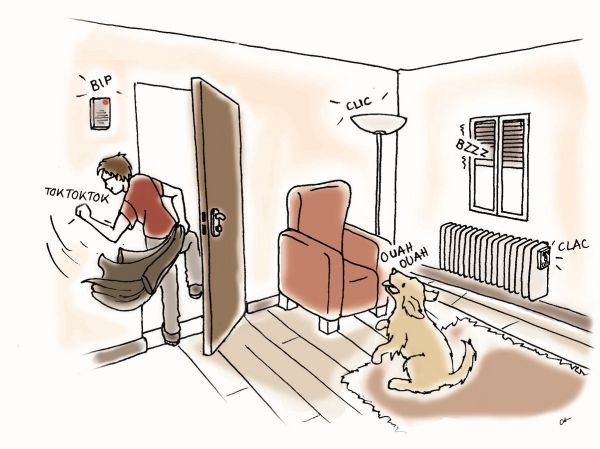
First, have a look at the indiegogo campaign video I made for the occasion :
Yes, you are seeing my face for the first time :-) .
So I'm gonna start by talking about the general toktoktok project idea:
What is the Toktoktok Project?
The Toktoktok project aims to create a simple, intuitive, and unified interface for all aspects of home automation. This product converts any surface into a touch sensitive input device for home automation purposes. To do so, I propose a cheap, simple-to-use and easy-to-implement box that only needs to be attached to a surface to make it sensitive to user interactions. This new technology is remarkable because it does not require specific indoor conditions to function and provides an intuitive input interface that anyone can use.
You may ask why is that useful? Well, imagine being able to control your home within arm's reach...
A Patent Free Idea!
I went to the Institute of Intellectual Property in Bern, Switzerland (where Einstein was working), and found that this idea of knock detecting boxes has not been patented.
Therefore, when this idea goes public, it falls into public knowledge and can't be patented anymore (well, in theory ;-) ).
Everyone can then use it but also twist it!
So who is it made for and how can you use it?
Toktoktok is made for everyone, as it is so simple to implement.
But more specifically, it is particularly suited for persons having a low-mobility.
Currently, the toktoktok system is composed of toktoktok boxes, lamp/power switching sockets and RF receivers for computers.
Therefore, it will allow you to:
- add additional switches in convenient places
- not spend 10 minutes looking for the light switch, especially if you are in the dark
- switch off all electronic devices when leaving the house
- control your computer music player from anywhere
- quickly turn off your computer (not the hard way ;) ): this is for people (like me) that like watching films from their beds....
- simplify your life...
What is wonderful is that you only need to get one toktoktok box to start your toktoktok install.
Power/lamp switching sockets can be bought in your country from various companies, and you can make the computer RF receiver yourself.
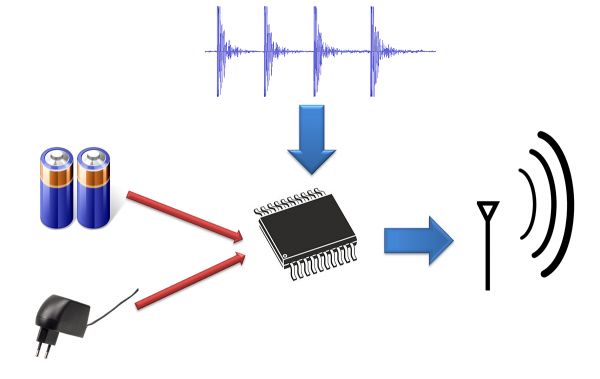
And now, let's get technical!
As you can see in the simplified view of the toktoktok box above, the system can be powered by either batteries or a power supply, has an audio processing circuit and a 434Mhz RF emitter.
The audio part
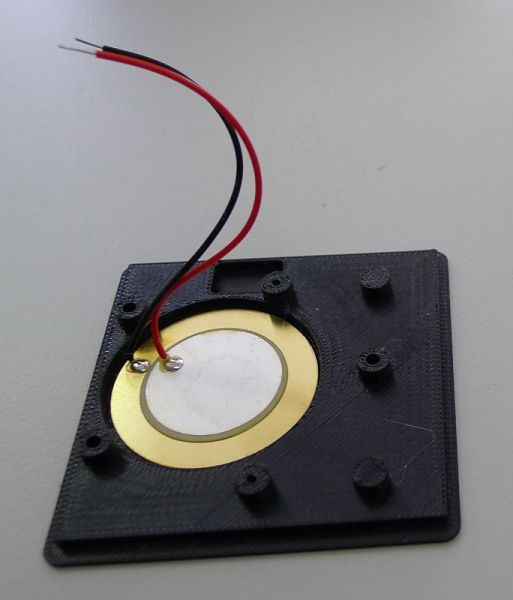
In this picture is shown a contact microphone, placed at the bottom of the toktoktok box.
What is a contact mic? Well, it is just a fancy word for a piezoelectric element. It is very simple to produce, has a non linear response curve and a resonant frequency around 3kHz.
Why is it well suited for this project? Because it will only 'listen to' the vibrations of the surface it is fixed to.
Then you just need to amplify the signal coming out of the mike and you're good to go. However, special attention must be paid to the input impedance of the amplifying circuit, as the piezo's impedance is very high (ie: it can't produce a lot of energy).
The RF part
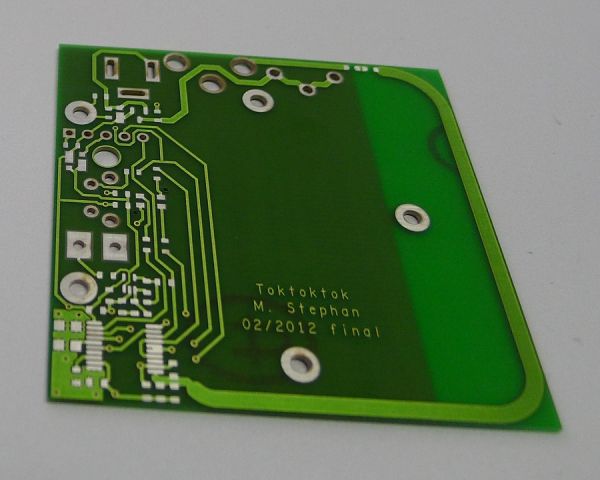
See the big PCB trace on the right? This is a loop antenna.
A loop antenna is basically a piece of wire resonating at a given frequency. However, the very hard part is to adapt the length of this antenna to allow a maximum of power to be transmitted to it (otherwise it is reflected back to the transmitter).
I'm not going to explain in details the different types of antennas that exist, but here is a very good document that shows them all.
An ideal loop antenna should be a quarter of the chosen wavelength long. But it is possible to make it shorter by adding terminating capacitors (in the pF range).
So how do you make a good loop antenna? You make different variations of your antenna design, choose the one that has the best performances, and again...
Seems very professional right? Well, if you don't have a PhD in RF design everyone will tell you to do that...
The tool that I used to measure my RF performance was the RF explorer:
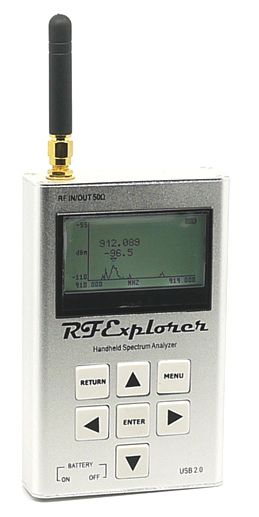
I have to say it is a wonderful tool, and very cheap: 100$.
Still, you'll have to spend several hours to get a nice result.
The whole system
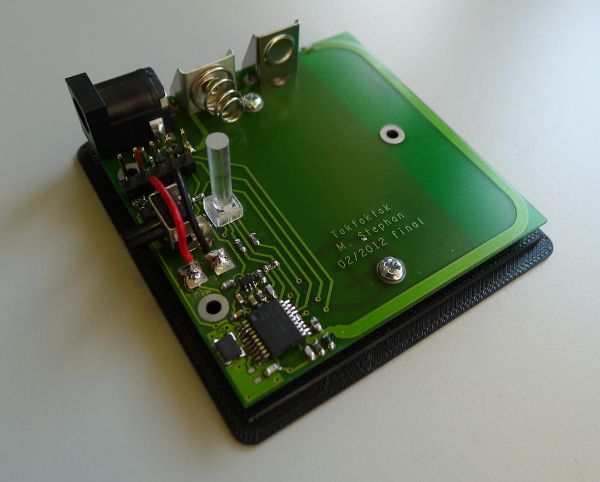
For this project, I have chosen a RFPIC from Microchip.
It is actually ideal for what I wanted to do: it has an ADC, a programmable voltage reference and a 434Mhz RF transmitter.
The ADC will allow me to have the audio data on which I'll run my algorithms while the voltage reference will be used to set different levels of vibration sensitivity. Perfect, right?
One switch is present to let the user set the desired behavior of the toktoktok box, and a RGB led displays the system status.
This toktoktok box has a 2 years autonomy when powered by 2 AA batteries, which is not that bad knowing that you must have at all times the audio circuit powered.
Don't forget that a tradeoff must be made between product cost and autonomy ;-) , with this solution, I have a relatively low component count!
The RF power sockets & remote control
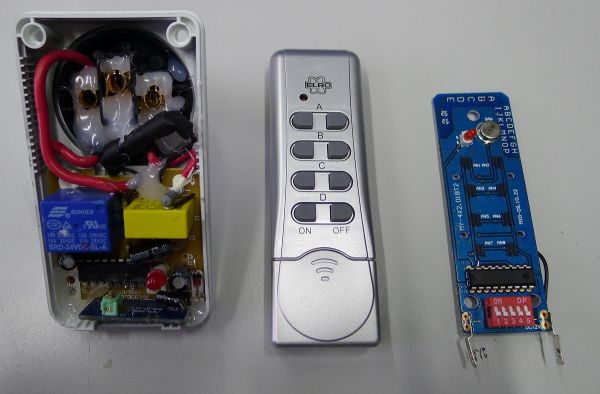
I'm sure that you have already seen these RF controlled power sockets... and you'd be surprised to know that they all use the same kind of RF communication: 434Mhz ASK.
With an oscilloscope connected to the remote control, reverse engineering the thing is done in several minutes ;-) .
And bam, the toktoktok box is interfaced to these plugs.
FYI, my antenna design has a better performance than the remote control shown in the picture. Epic win!
The RF toktoktok computer receiver
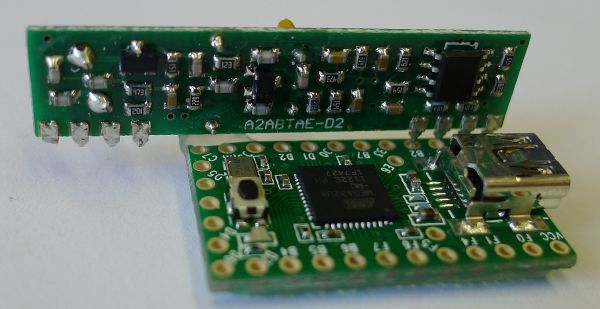
This is the fastest mini project I have ever made.
A 16$ teensy, a 5$ RF receiver from sparkfun, 3 solders and you have a toktoktok interface for your computer.
You can then do plenty of things, from emulating keyboard presses to doing some more advanced processing if you chose to change the RF toktoktok protocol.
Cool! So what now? Where are the files?
You can already pre-order some toktoktok boxes if you want to play with them in the future :-) .
All the production files, BoM, source code will be released under a TAPR Open Hardware license if the indiegogo campaign is sucessfull. Raspberry is doing more or less the same, right ;-) ?
You are several thousands watching my blog every month, I'm sure some of you can help me :-) .
Don't forget the logo design contest!
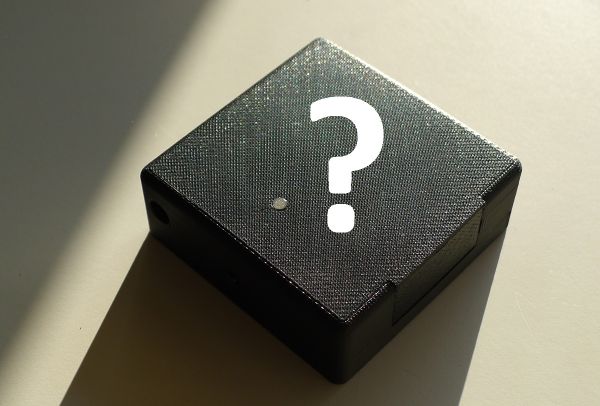
Here is the thing: I don't have a logo to put on the toktoktok box.
Therefore, I have decided to let people contributing to this project to propose their design.
That's right... I will not have a say in the chosen toktoktok logo!
And don't worry... the final toktoktok finish quality will not be the same as the one shown in the picture ;-) , final boxes will have a nice smooth abs aspect!
The future of toktoktok?!
In case the project encounters a huge success, I'm already working on the version 2 of the toktoktok boxes.
They will have bidirectionnal RF communication and much more processing power to run advanced algorithms ;-) .

Comments
T'es toqué comme mec ! ^^
Génial ! J'adore !
http://hackaday.com/2012/03/08/rein...
Cool!
My question: does this work on concrete or brick walls as well?
Very kewl! Beats x10 all to heck!
@Sandyman : Well, not that much :-) . As you may have guessed, the system performance is proportional with how much the surface it is attached to can vibrate.
@limpkin : Well, add an audio sensor component! :-)
@Rubberman : to get a decent noise when knocking on a concrete or brick wall, you will not have much of your hand left to use :P
moreover noise is directly related to vibration :)
@limpkin : A stick will work, and probably better than a hand in such a situation! :-)
@Rubberman : indeed :-) . But one doesn't have a stick on him at all times ;-)
@limpkin : Well, in such a situation, I find my head works just as well! :lol:
@Rubberman : I couldn't agree more! (cf video) :-D
After looking at the video, I have to say that this seems like an ideal Kickstarter project!
@limpkin : Ok. Looks like a Kickstarter clone. Thanks. Being a USA denizen, I hadn't heard about Indiegogo before. I just visited their website and it definitely looks a lot like KS, in intent at least! :-) Thanks for pointing it out to me. I wasn't aware that KS could not be used for international crowd-sourced fund-raising.
@Rubberman : You're welcome :-) . Just for this, I'd like to live over there!
@limpkin : Well, I helped to fund this: http://www.kickstarter.com/projects...
@Rubberman : Nice! As for me, I'd just appreciate if you could help me spread the toktoktok word on the net :)
@limpkin : Well, let's see if I have any extra $$ at the end of the month! :-)
Hello Limpkin,
Sorry my french is rusty...
Have you considered funding through kickstarters?
@Antonio : I can't use kickstarter as I'm not living in the USA. However, I may launch it soon via www.qoqa.ch